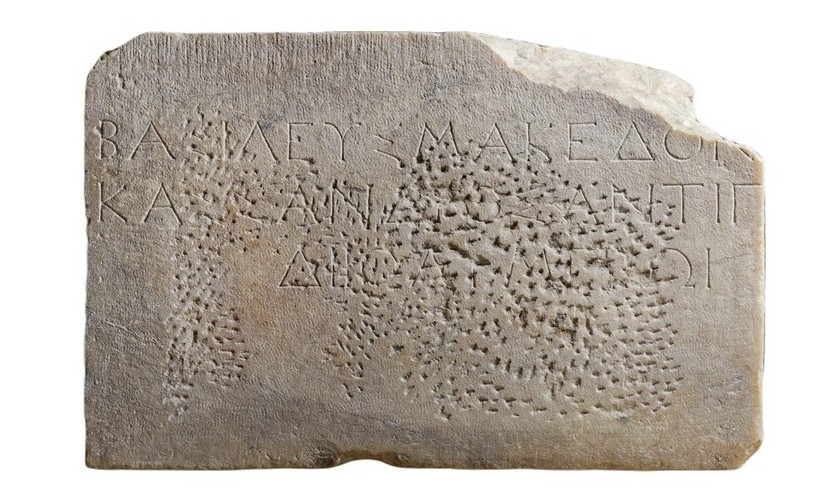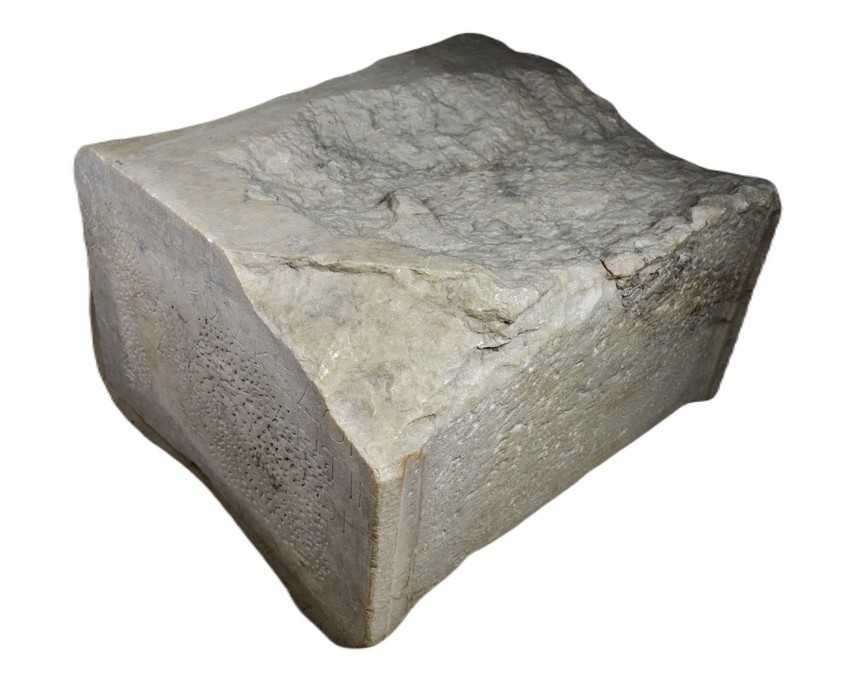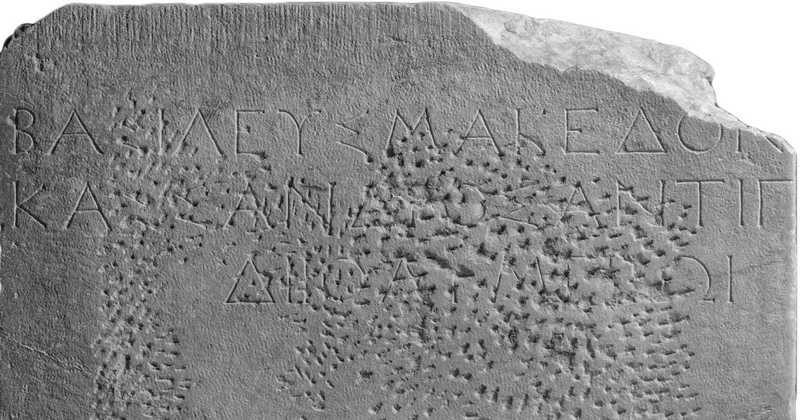In October 1979, during the excavation of the sanctuary of Isis in Dion, a female statue was found standing on a pedestal bearing a six-line Latin inscription. The statue depicts Isis with the horn of Amaltheia, i.e., as Isis- Tyche (Fig. 1, 2). The inscription, however, is not related to the statue, as it has an upside down direction. The text commemorates Herennia Prima, a woman honored by her relatives. Apparently, the honorary inscription belonged to an earlier use of the pedestal.


When the excavation proceeded and the upper surface of the pedestal under the statue of Isis was revealed, a three-line Greek inscription appeared:
The king of the Macedonians
Cassander, son of Antipatros,
to Zeus Olympios (Fig. 3)

This inscription was the first to be engraved on the pedestal (305-297 BC). The remains of the upper surface corresponding to the inscription show that a larger than life-size bronze statue stood on the base (Fig. 4).

Accordingly, we detect three uses of the pedestal. Initially, it must have supported a statue of Zeus erected in the sanctuary of Zeus Olympios, a votive offering of Cassander himself, the king of the Macedonians. After the destruction and abandonment of the sanctuary, everything that could be reused must have been transferred to other sanctuaries and the city. In the early imperial era, the base of Cassander was reused to support a female honorary statue, probably in the sanctuary of Isis. Finally, it was used as a pedestal for the statue of Isis-Tyche in the southern temple of the sanctuary.
In ancient times, the acquisition of new material from the quarry was a costly and time-consuming process. That is why, in areas with continuous habitation, the practice of repeated reuse of ready-made construction material prevailed. Thus, the pedestal of Cassander shows three milestones in its long history.
Basic bibliogpaphy: Δ. Παντερμαλής, «Οι επιγραφές του Δίου», στο: Πρακτικά του Η ́ Διεθνούς Συνεδρίου Ελληνικής και Λατινικής Επιγραφικής, Αθήνα 3-9 Οκτωβρίου 1982, τόμ. Ι, Αθήνα 1984, 271-277, ιδίως 271-272. D. Pandermalis, «Ein neues Heiligtum in Dion», AA 1982, 722-735, Δ. Παντερμαλής, Δίον. Η ανακάλυψη, Αθήνα 1999, 102-103.

